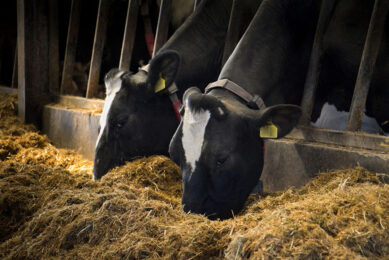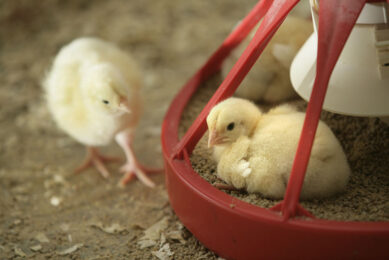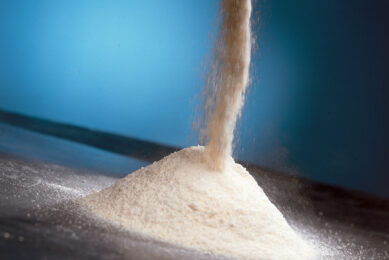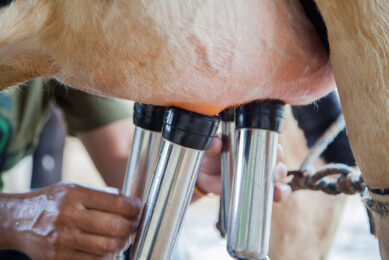IFF projects reviewed
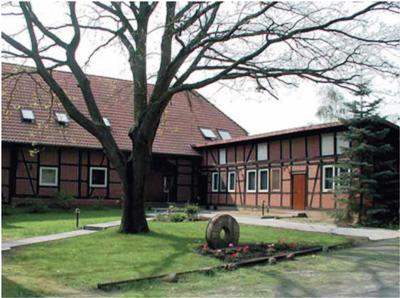
The Research Institute of Feed Technology of the International Research Association of Feed Technology in Braunschweig, Germany runs several projects on feed processing. This article summarises some previous and ongoing projects that are of interest to the feed industry.
At feed-compounding small amounts of highly effective micro components are added to feed materials which predominantly are of vegetable origin. In most cases the additives are processed in the form of premixtures. When micro components are added directly, the requirements with regard to dosing accuracy and homogeneity as well as the stability of the mixture are even higher than in case of processing premixtures. The aim of the research project “Simplified addition of critical micro components at feed-compounding” was to provide an experimental database which allows the production, or the selection of structures of compound feed and of micro compounds with regard to a reduction of the cross-contamination, and the optimisation of the stability of feed mixtures.The findings are specified below and were worked out using different compound feeds and additives with particle structures according to standard formulations:
- The mixing behaviour of coarsely additive components (125–500 µm) can be simulated and analysed with high sensitivity and precision by using tracer components which are confected from a tracer dye and a diatomite product and which are indicated by different definite structures.
- The mixing behaviour of the micro components which were used for the tests predominantly depended on their structure.
- Mixtures of compound feed and the additives show a considerably increased stability if their modal values of the density distribution functions match. The stabilising effect of water on the mixing homogeneity depends on the structure of the components, too. Significant effects only occur if the compound feed is structured finely. They decline with rising particle sizes of the additive formulation.
- The level of cross-contamination of micro compounds depends on correspondences of the structures of the mixtures components, too. Besides a general increase of the cross-contamination with the particle sizes of the feed materials the lowest cross-contamination level – independent of the feed structure – was found when coarse-particle additives were utilised.
On the basis of the findings of the investigations, suitable structures for compound feeds and for additives can be identified. The behaviour of differently structured micro components in the processes can be analysed accurately by means of the confected tracer dye components.
Grain cleaning
When using mechanical grain cleaning processes in compound-feed production, three major requirements must be met: high throughput, minimal waste, and efficient cleaning measured in terms of a reduced germ count and an improved microbiological condition. A compromise must thus be found between the best cleaning effect and the smallest material loss, which will depend on the quality of the grain supplied.
Mechanical grain cleaning comprises the steps of aspiration of the dump pit and the conveying routes, metal separation, intensive screening, and flow screening. It improves operational safety by reducing the plant-specific hazard potential and increases product safety by reducing microbiological contamination.
Quality is always improved when tested systems (drum screen, flat screen, and centrifugal screen) are used. With 1 mm sieve openings, good cleaning results were achieved in terms of the removal of small grains and contaminants. With increasing sieve openings, there are considerably higher screenings for wheat, particularly with openings from 2 mm. This also results in mass losses (>3%) while not achieving adequate improvements in the microbiological condition.
With sieve openings remaining the same (1 mm), the centrifugal screen proved most effective in reducing the total bacterial count. This is due to more intense action on the grain surface. Compared to the cleaning result of the other screen types involved, lower total bacterial counts were found in the desirable grain sizes, and higher bacterial counts in the screenings. The use of 1 mm screens and a moderate flow velocity of the air classifier in the pilot plant (18 m/s) resulted in mass losses in the order of 1.0 to 1.5%. Taking into account the varying quality levels of the raw materials at the start of the process, which causes a scattering of the results, there is no difference in mass loss between the screen types used, though the amount of screenings tends to be higher with the centrifugal screen.
All test results confirm that more contaminants are found in the screenings of the fine screen and at the air classifier outlet. They are therefore not suitable for further use in compound-feed production. Based on the findings from the trials carried out, the following steps are proposed for implementation of an effective cleaning concept:
- Agreement and monitoring of verifiable minimum quality levels for the properties specified;
- Effective aspiration of the dump pit for initial separation of particulate dusts using filter separators, no recycling of the filter dust;
- Placement of effective and carefully maintained metal separators, preferably upstream of the first (aspirating) conveyor elements;
- Mechanical cleaning using sieve and flow screening, preferably with more intense action on the grain surface (centrifugal screen) and including the separation of fines <1 or 1.5 mm. Sand, fine admixtures and frequently contaminated smaller grain particles including dust are removed, while broken grains are not fully separated. The mass discharge is around 1 to 1.5%. The flow speed must be set to minimise the amount of grain in the air classifier outlet.
- Intermediate storage in clean bins, preferably with temperature monitoring.
Liquid addition in the mixer
Liquid addition in the main mixer is performed by the use of different liquid application systems. One-component nozzles or simple pipe systems are commonly installed in the top of the mixer. The liquids are applied to the fluidised bulk material. To overcome problems of aggregation it is common practice to introduce a dry mixing cycle, during which solids are mixed without liquid addition interfering. The instant of time for starting the liquid addition is chosen empirically. The duration of liquid application in practice depends on the used liquid application system as well as the process pulsing and may differ from case to case.
Anyhow, depending on the process and equipment design as well as the amount of liquids added negative effects on product quality – like undesired agglomeration of additives, therewith accurate mixing or caking as a source of cross contamination – are likely to occur.
The state of knowledge of the process design, the amounts of liquids added as well as their properties considering on particle movement, thus the mixing progress in discontinuous main mixers are not sufficiently characterised until now. In this relation, influences of different liquids respectively different liquid properties on mixture stability are not sufficiently known either. A deeper knowledge on material and process parameters and their influence on the mixing process when adding liquids is missing, especially in the avoidance of undesired agglomerates.
Therefore the influences of
- the type of the liquid application system,
- the amounts of liquids,
- their properties on particle movements in the discontinuous main mixer and
- the mixture homogeneity
were characterised within this researchproject. More information can be obtained from the project manager Alexandra Kirchner at a.kirchner@iff-braunschweig.de
Pelleting new ingredients
In volatile and high priced markets for raw materials, the feed industry searches for available lower-cost alternative ingredients to replace traditional types of cereals and soy-based protein carriers in feed formulations at least in parts. And these new materials need to be pelleted. A formal transfer of the findings on pelleting of the past decades to the present situation is not possible due to changed basic conditions and customer demands. Livestock owners increasingly require coarser structures of the feed mixtures for pig feed based on recent nutritional research results. According to present knowledge, coarser structures might impair the mixture stability and complicate the pelleting process significantly. A reliable estimation on the influence of the structure therefore requires urgently the inclusion of technological possibilities and limits of pelleting.
While the nutritional questions for the eligible products and substitutes respectively are mainly resolved, the determination of the process behaviour of these starch or protein containing alternatives has not been subject of scientific investigations so far. Compound-feed plants are not able to carry out necessary systematic investigations by themselves due to the unfavourable basic conditions (just-in-time production usually on single-line multi-product plants) and due to staff shortage.
The goal of research project, finished at the end 2011 was to determine material, process and system technical parameters in order to develop recommendations for a suitable and more energy-efficient production of pelleted pig and dairy cattle feed mixtures. Special consideration was given to changed basic conditions and customer demands for short-term conditioning which is mainly used in feed plants.
Alternative feed mixtures (e.g. DDGS, peas, beans, sorghum, by-products from food industry) were evaluated with respect to their suitability concerning product quality and safety as well as processing properties. Furthermore, the target results on the influence of the structure on the efficiency of the pelleting process are an urgent necessary supplementation for recent nutritional research findings which favour significantly coarser particle-size distributions in pig feeding. However, its technological implementation seems to be more problematic.
In order to achieve the mentioned goals, a multi-stage test programme was established:
- Compacting of single ingredients on the laboratory pellet mill
- Production of standard mixtures without alternative ingredients
- Production of mixtures with different parts of alternative ingredients
- Tests on secondary milling
- Further measures for improving the pellet quality and throughput and reducing specific energy requirements respectively
- Compilation of a guide for practitioner.
The mixtures were also ground into three different grades before pelleting, conditioned at three grades of saturated steam and pelleted on two different die diameters.
To achieve comparable data, feed mixtures for fattened pigs and dairy cattle of commercial, grain-based composition were milled in different ways and conditioned with varying saturated steam and then pressed into pellets by means of a pan mill (flat die). A final report is in the making and more information can be obtained from project manager Michaela Stelling at m.stelling@iff-braunschweig.de.




